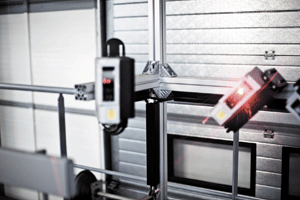Many metal tools health care providers use have a distinctly shiny, smooth appearance. Those products often get that finish after manufacturers proceed with electropolishing medical devices. Here’s how electropolishing works and why it’s such a viable medical device option.
What Is Electropolishing?
Electropolishing is a metal-finishing process most commonly used on stainless steel. It uses an electrical current to remove a thin layer of material from the surface. This option is the opposite of electroplating, which involves depositing material onto the existing surface.
People using electropolishing on a medical device begin by attaching a pair of electrodes to it. One is the cathode and the other is the anode. After someone connects the electrodes to a direct-current power source, the device gets immersed in a temperature-controlled electrolytic solution.
Turning on the current makes electricity flow from the anode to the cathode, oxidizing the medical device’s surface while removing impurities and providing a smooth, even finish. Electropolishing can even improve the look of previously used medical devices by reducing scratches, stains and discoloration. The process brings a brilliant shine to the piece, but the benefits don’t end there.
Electropolishing Supports Safety in Health Care
In the medical industry, any rough areas on a tool can pose contamination risks. That’s because they often result in microscopic gaps and pockets on the metal surface, and germs or dirt can accumulate in them. However, electropolishing is a widely chosen way to make these surfaces smoother.
The COVID-19 pandemic made people acutely aware of infection-control measures, including those related to medical devices. Since the virus also resulted in numerous hospital workers needing to stay home from work due to illness, getting health care tools cleaned fast enough and ready for the next patients became more challenging. Those are some of the many reasons for the trend toward single-use medical devices.
Even so, stainless-steel medical devices have become so ubiquitous that they won’t fall out of favor any time soon — and probably not ever. Since electropolishing medical devices is such an established and effective method, it’s easy for manufacturers to justify continuing to use it in the interest of patient safety.
Electropolished Devices Are Easier to Clean
A micron is one millionth of a meter. Relatedly, some bacteria are less than 1 micron in length. Thus, people need powerful microscopes to see the bacteria on a surface. However, electropolishing is particularly advantageous for cleanliness because it provides a microscopic surface smoothness similar to a pane of glass.
That characteristic means an electropolished surface has a non-stick nature that allows people to clean it thoroughly and more efficiently than a rougher surface. Many hospitals are also dealing with labor shortages, which could mean it takes longer to get reusable devices ready for the patients that need them.
Electropolishing medical devices during manufacturing is an excellent way to make them user friendly. Additionally, some hospitals use technologies like the Internet of Things to improve cleaning procedures in their respective facilities. Research shows this approach causes a substantial increase in compliance over conventional measures.
Electropolishing Medical Devices Could Improve Patient Perceptions
When patients need medical care, it’ll ideally be in non-urgent situations that let them decide which facilities in the area best suit their needs and preferences. Someone might go to one highly rated for maternity care or considered a leader in pioneering cancer treatments. It’s also becoming more common for hospitals to use monitoring devices to supervise recovering patients. If a person likes that option and knows a local hospital often offers it, they might choose to go there.
Regardless of where a person goes for treatment, they frequently — and rightfully — expect minimum cleanliness standards. If they walked into a waiting room and saw a dirty floor, food wrappers littering the seats and providers treating patients without the proper protective gear, they’d probably leave to go elsewhere.
Since electropolishing medical devices results in a shiny finish, it gives patients the impression those products are clean and safe for use. That makes sense because many people’s cultural conditioning makes them link shininess and cleanliness. Whether the shiny surface is a dinner plate or a new car’s exterior, people usually find it more appealing if it’s mirror-like versus dull.
Research also indicates a patient’s perception of a health care facility’s cleanliness affects their likelihood of reporting an infection after discharge. More specifically, people are 2.5 times more likely to report signs of infection after leaving ambulatory care facilities if they don’t feel those locations were clean.
Electropolishing Makes Sense for Medical Devices
Electropolishing is a frequently utilized practice that results in many features people in the medical industry find particularly attractive. Since people can do electropolishing treatments in minutes, these finishing options are ideal for manufacturers or others handling large product volumes. The electropolishing process gives visually appealing and reliable results, making it an attractive possibility for metal finishing in the medical industry and various other sectors.























